Traveling between Madrid and Barcelona offers a unique opportunity to explore some of Spain’s most fascinating destinations. Instead of rushing from one city to another, why not take your time and enjoy the journey? You’ll find ancient towns, gorgeous cities, and stunning landscapes that are often overlooked. This itinerary is perfect to experience Spain beyond its two largest cities.
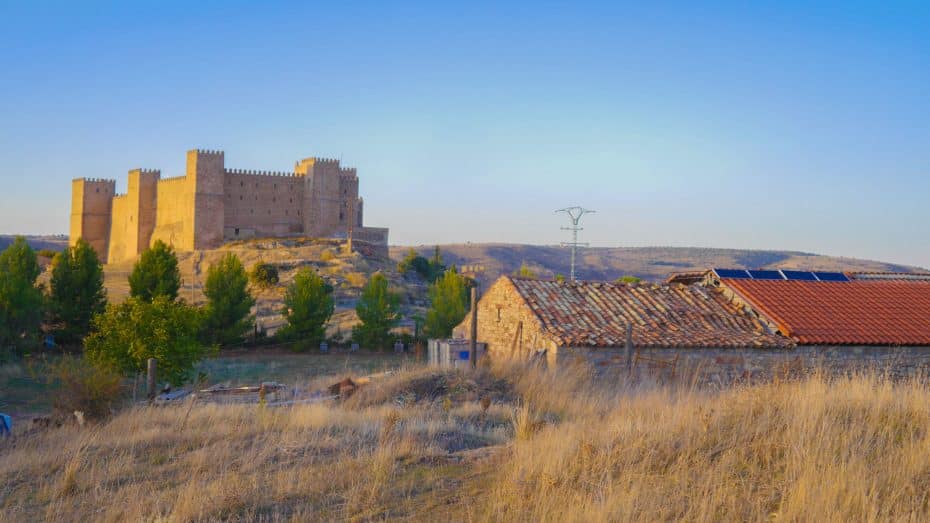
Whether you’re driving or taking the train, there are several must-visit stops that will make your trip even more memorable. Visit Roman-era cities, marvel at medieval architecture, and relax in picturesque coastal towns. Keep reading to discover the best places to visit between Barcelona and Madrid, and have fun along the way. Because let’s face it, the pit stops are where the real adventure happens!
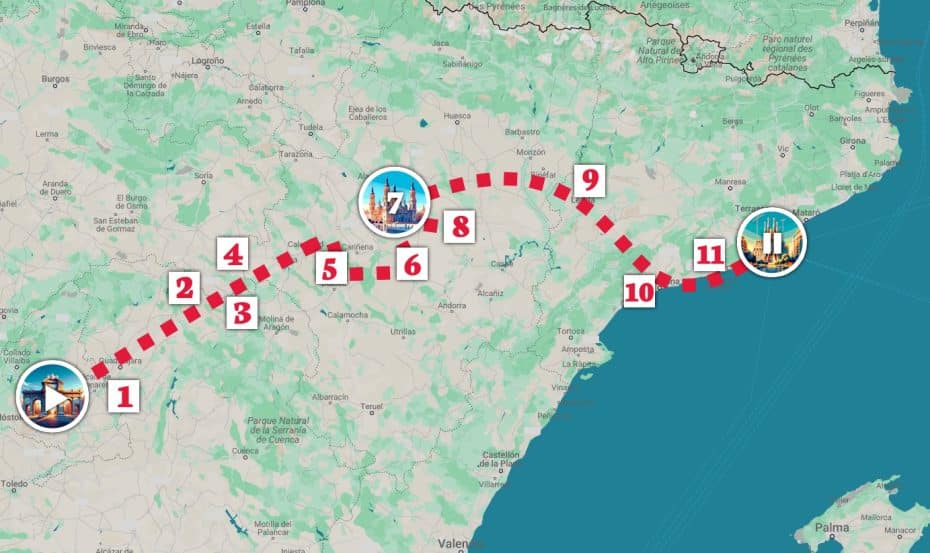
Before We Start Our Spanish Itinerary
Before we start our Spanish itinerary, there are a few things to keep in mind. To begin, make sure to read our comprehensive guides on Madrid and Barcelona to get the most out of your visit to these incredible cities. If you’re traveling by car, ensure you have a valid driver’s license for Spain. Additionally, familiarize yourself with local driving laws and regulations to ensure a smooth journey. You can rent a cheap car in Spain here if you need a vehicle. Lastly, check out the RENFE site for schedules and ticket information if you’re traveling by train. Additionally, you can book discounted train and bus tickets here. With these preparations, you’re ready to embark on an unforgettable adventure between Barcelona and Madrid.
Top 11 Places to See Between Madrid and Barcelona
Without further ado, these are the top places and best things to do between Madrid and Barcelona for your Spanish itinerary:
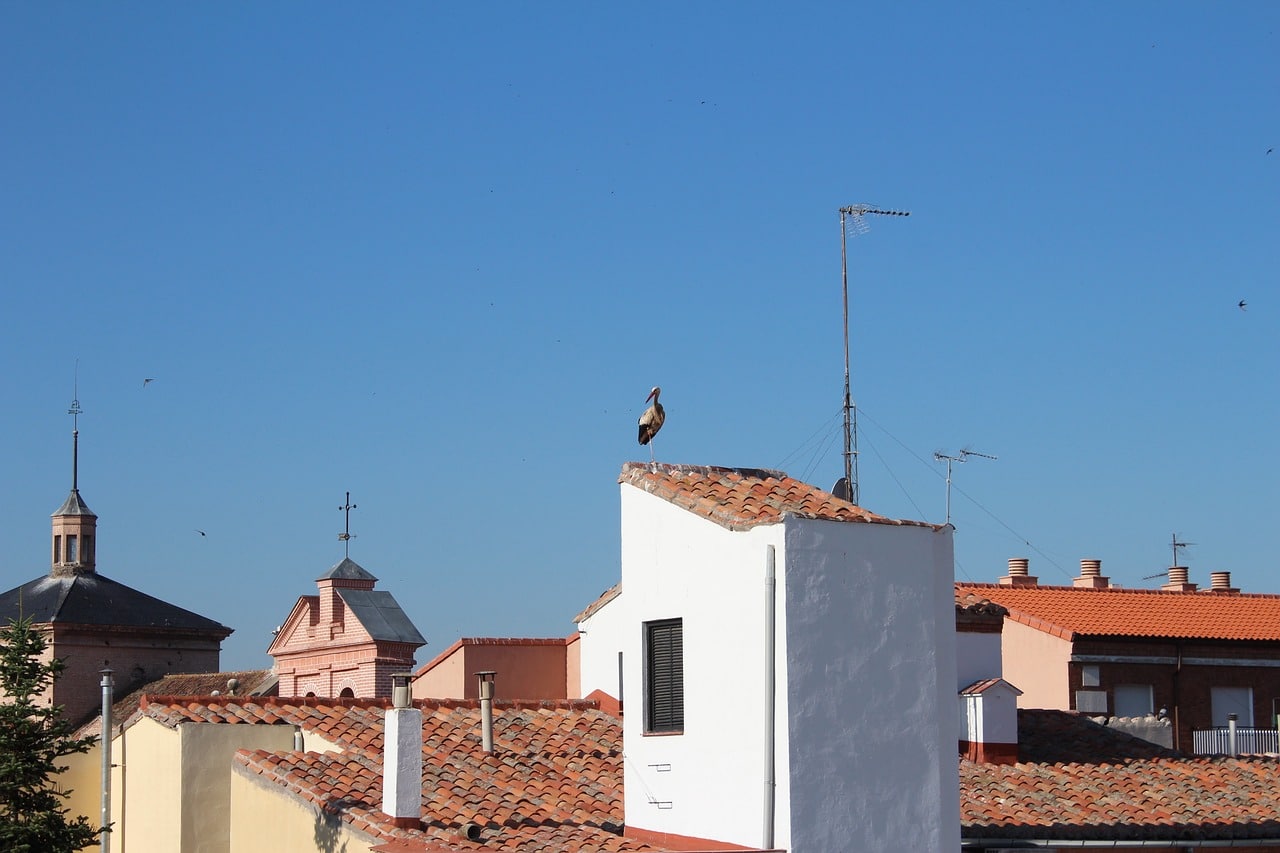
1. Alcalá de Henares
Alcalá de Henares, located about 35 kilometers (22 miles) northeast of Madrid, is a historic city known for its cultural heritage. It is the birthplace of the famous writer Miguel de Cervantes, author of “Don Quixote.” The city is home to the University of Alcalá, one of the oldest universities in Spain, founded in 1499.
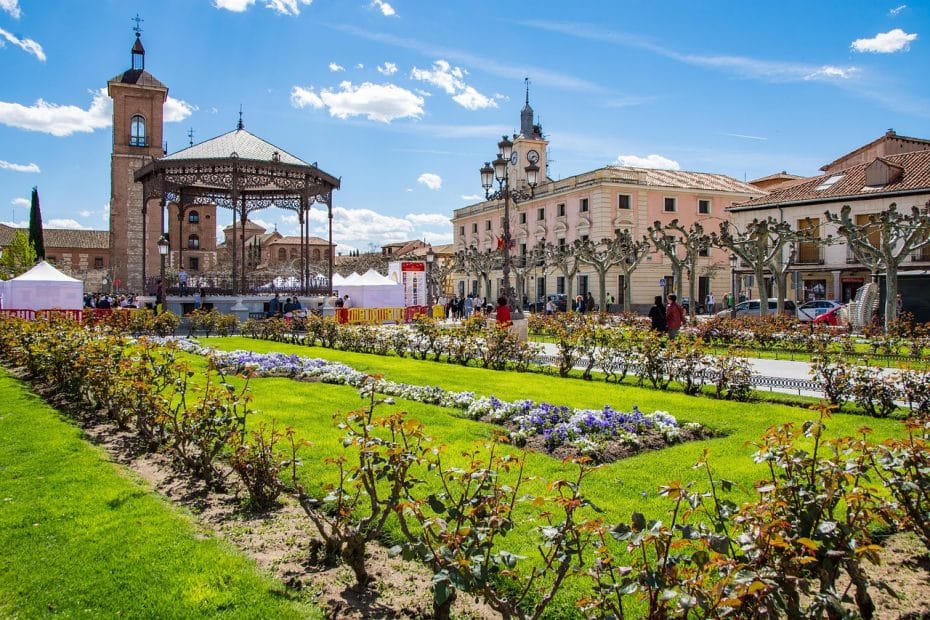
While in Alcalá de Henares, you can visit the Cervantes Birthplace Museum, which offers a glimpse into the life of the renowned writer. The city’s historic center, a UNESCO World Heritage site, features beautiful architecture, including the stunning Plaza de Cervantes and the impressive Alcalá Cathedral. Don’t miss the chance to stroll along Calle Mayor, one of the longest arcaded streets in Spain, lined with charming shops and cafes.
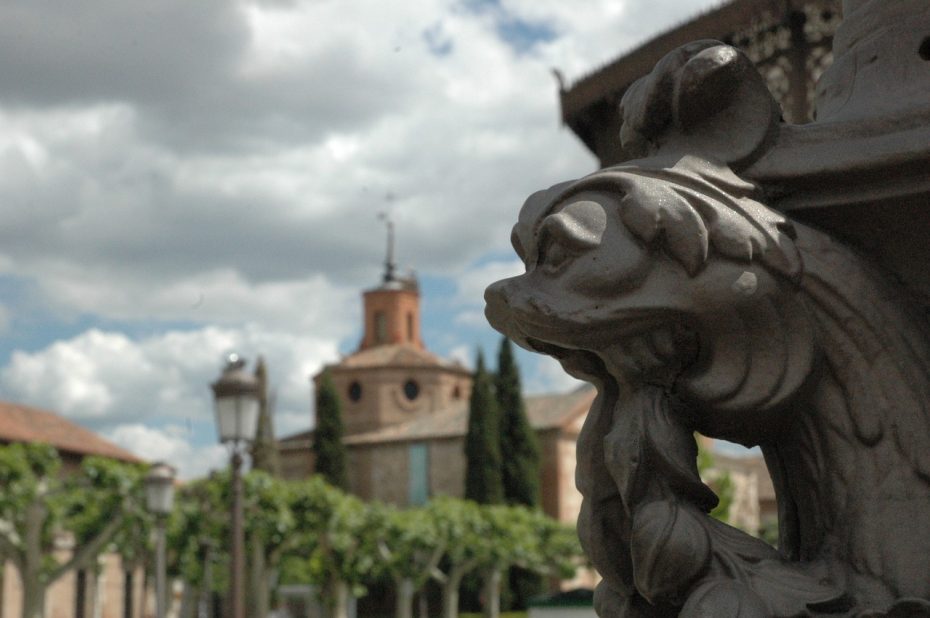
There are plenty of things to see in Alcalá de Henares. The Archbishop’s Palace, where Christopher Columbus met with Queen Isabella in 1486, is a must-visit. The Corral de Comedias, one of the oldest theaters in Europe, still hosts performances today. The Henares River Park offers nature lovers a peaceful retreat with walking trails and picnic spots.
Alcalá de Henares is along the natural route you’d take exiting Madrid to the northeast, making it a convenient and enriching stop on your journey. If you’re traveling by car, it’s an easy drive along the A-2 highway. If you’re taking the train, you can catch a Cercanías train from Madrid, which takes about 40 minutes.
Luckily, you have several options if you decide to stay in Alcalá de Henares. For a luxurious stay, consider the Parador de Alcalá de Henares. The AC Hotel Alcalá de Henares by Marriott is a great mid-range option. Lastly, the ibis Budget Madrid Alcalá de Henares offers clean and affordable rooms if you’re on a budget.
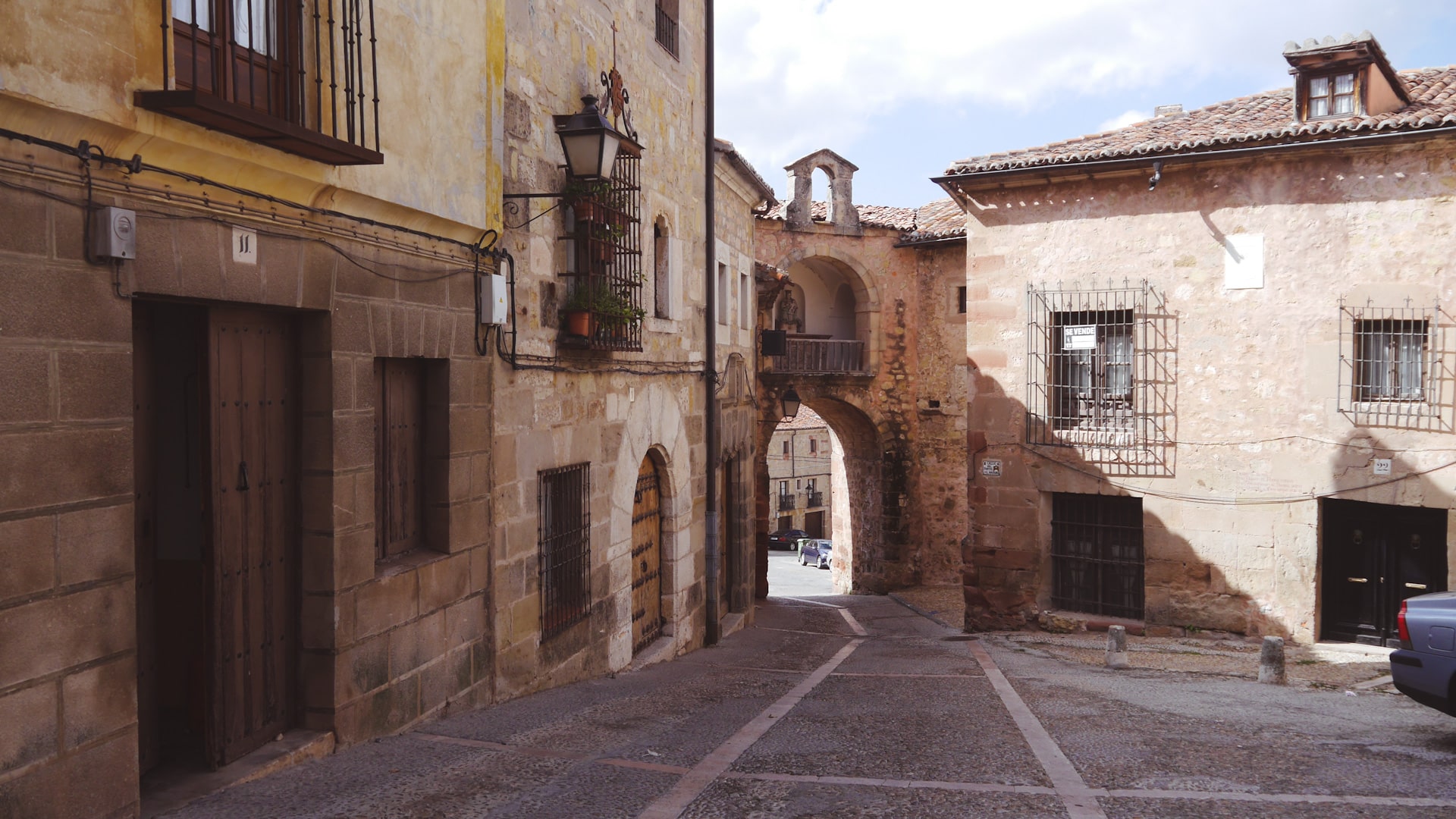
2. Sigüenza
Sigüenza, about 130 kilometers (81 miles) northeast of Madrid, is a medieval town with a fascinating history. The impressive Sigüenza Castle dominates the city. This structure dates back to the 12th century and is now a historic castle hotel. The castle offers stunning views of the surrounding countryside and a glimpse into the town’s past.
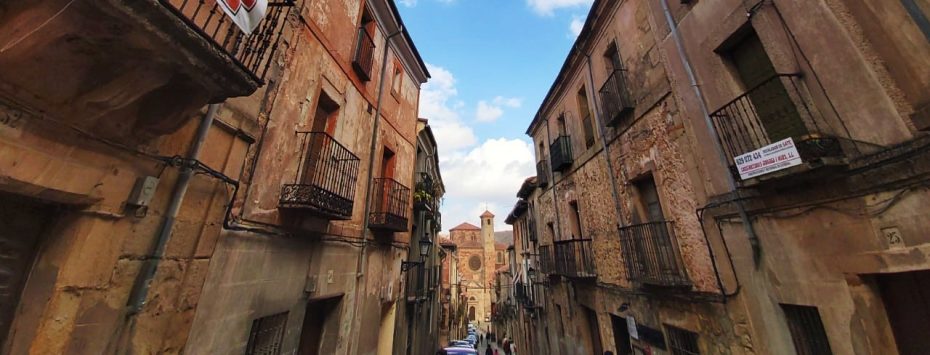
Although it’s considered an off-the-beaten-path destination in Spain, there are many things to see in Sigüenza. The Cathedral of Santa María, a magnificent Gothic structure, houses the famous Chapel of the Doncel. The cathedral’s interior is adorned with beautiful artwork and intricate details. Another must-see is the Casa del Doncel, a well-preserved medieval house that is now a museum.
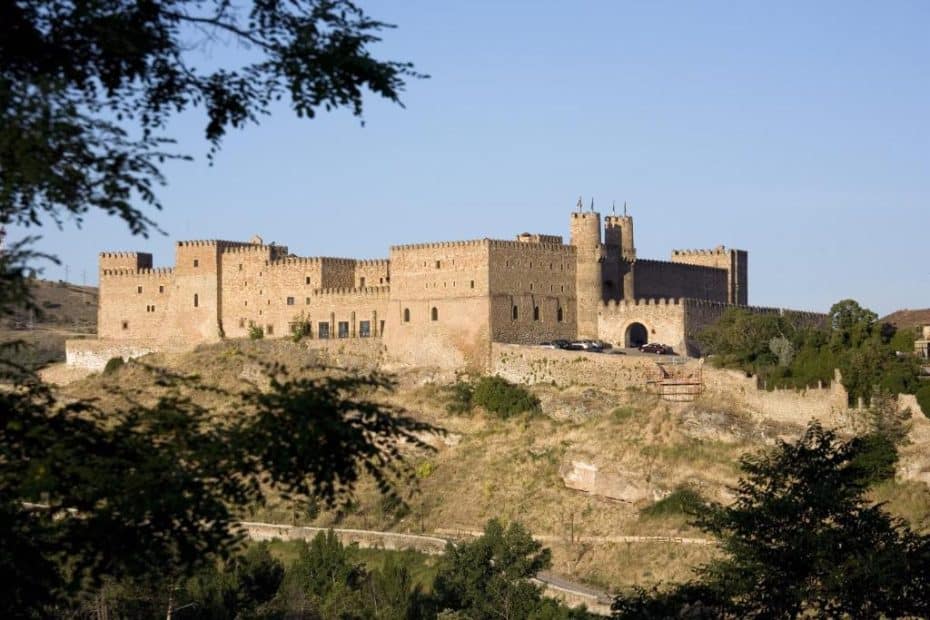
In Sigüenza, you can explore the Plaza Mayor, with its arcaded buildings and lively atmosphere. Additionally, the Church of Santiago, with its Romanesque architecture, and the Monastery of Nuestra Señora de los Huertos are also worth a visit. For nature lovers, nearby natural areas offer scenic hiking trails and breathtaking views.
Sigüenza is easily accessible by car via the A-2 highway, making it a convenient stop on your journey. If you’re traveling by train, you can catch a regional train from Madrid, which takes about two hours.
When talking about accommodations, Sigüenza has a few to consider. Firstly, Parador de Sigüenza offers a luxurious stay. For a mid-range option, Hotel Cardamomo Sigüenza offers comfortable rooms and a cozy atmosphere. Lastly, Hostal Doña Blanca provides clean and affordable accommodations if you’re on a budget.
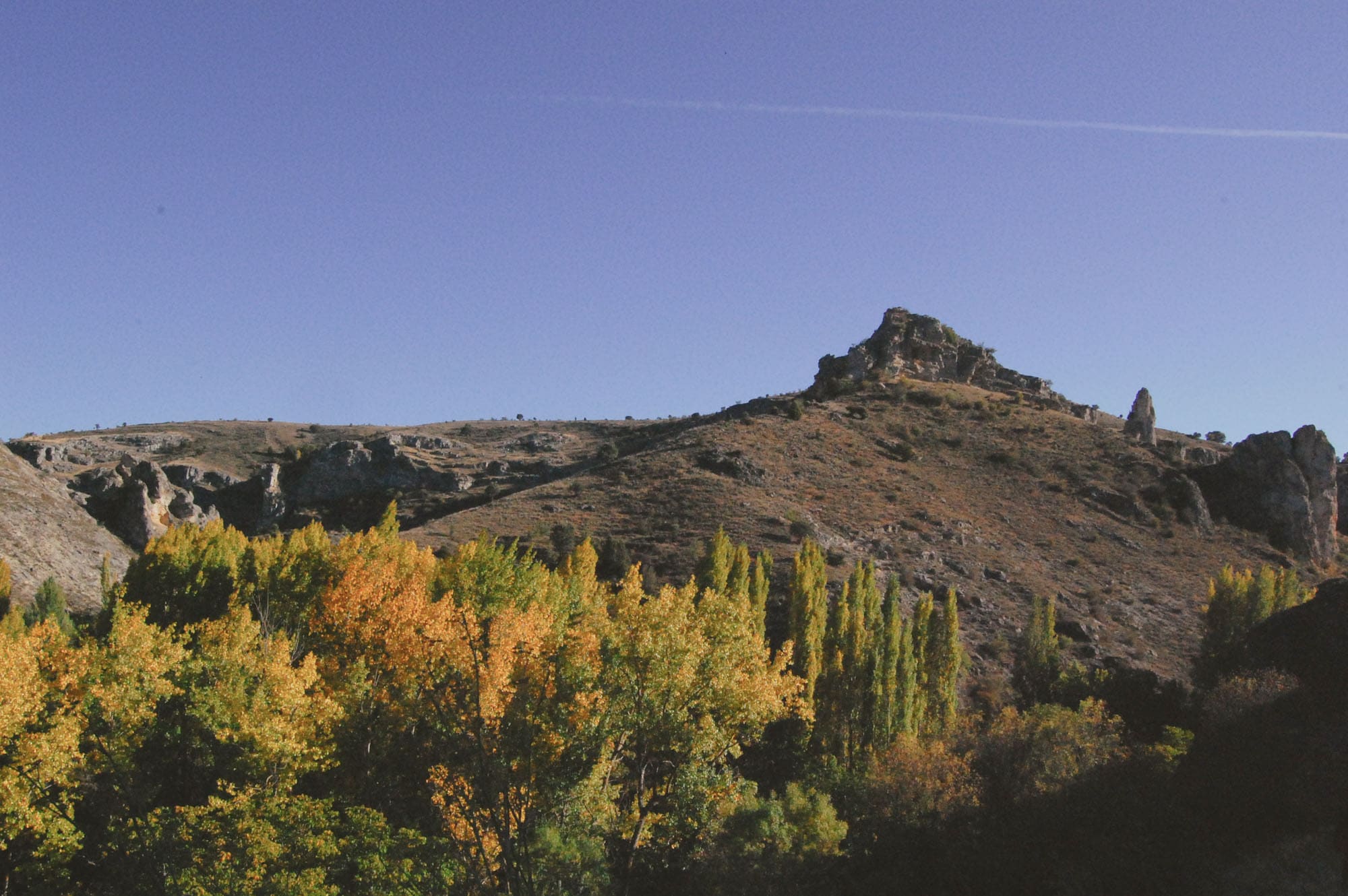
3. Barranco del Río Dulce
Barranco del Río Dulce Natural Park, located about 140 kilometers (87 miles) northeast of Madrid, is a stunning natural area perfect for outdoor enthusiasts. The park is known for its dramatic cliffs, lush vegetation, and diverse wildlife. It offers a peaceful retreat from the hustle and bustle of city life.
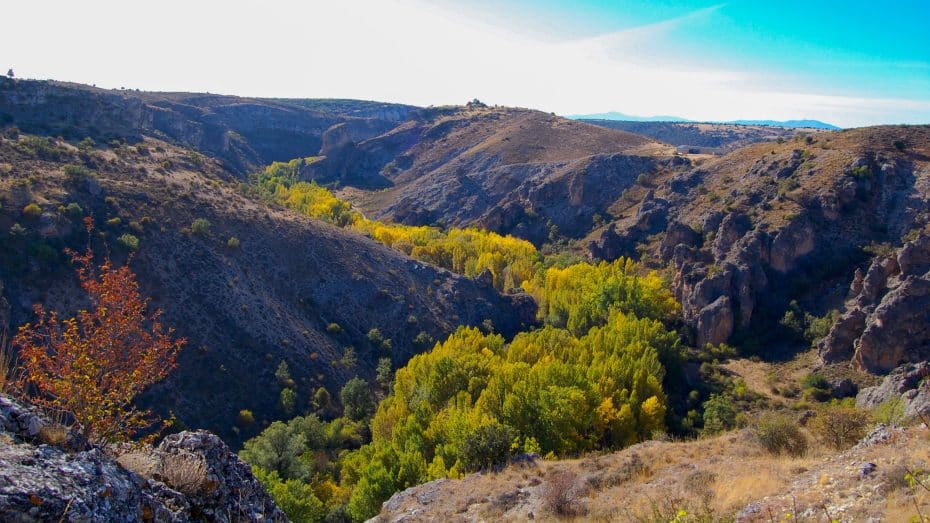
One of the park’s highlights is the Hoz de Pelegrina, a deep gorge carved by the Río Dulce. The gorge is a popular spot for hiking, birdwatching, and photography. The park also features several well-marked trails with different difficulty levels, making it accessible to all visitors.
In addition to its natural beauty, the park has historical significance. The ruins of the Pelegrina Castle, perched on a hill overlooking the gorge, offer a glimpse into the region’s medieval past. The castle dates back to the 12th century and provides a picturesque backdrop for your visit.
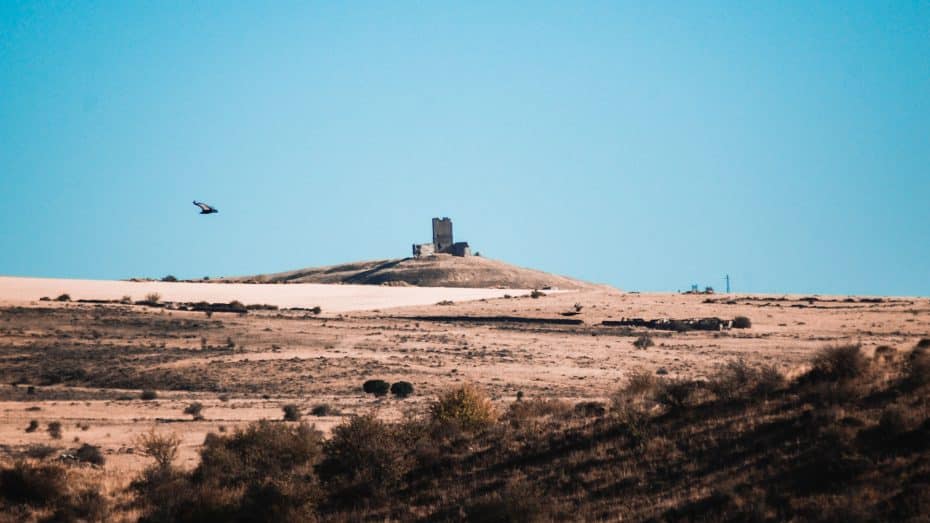
Barranco del Río Dulce Natural Park is easily accessible by car via the A-2 highway. If you’re traveling by train, you can catch a regional train to Sigüenza and then hike to the park, which is about 10 kilometers (6 miles) away.
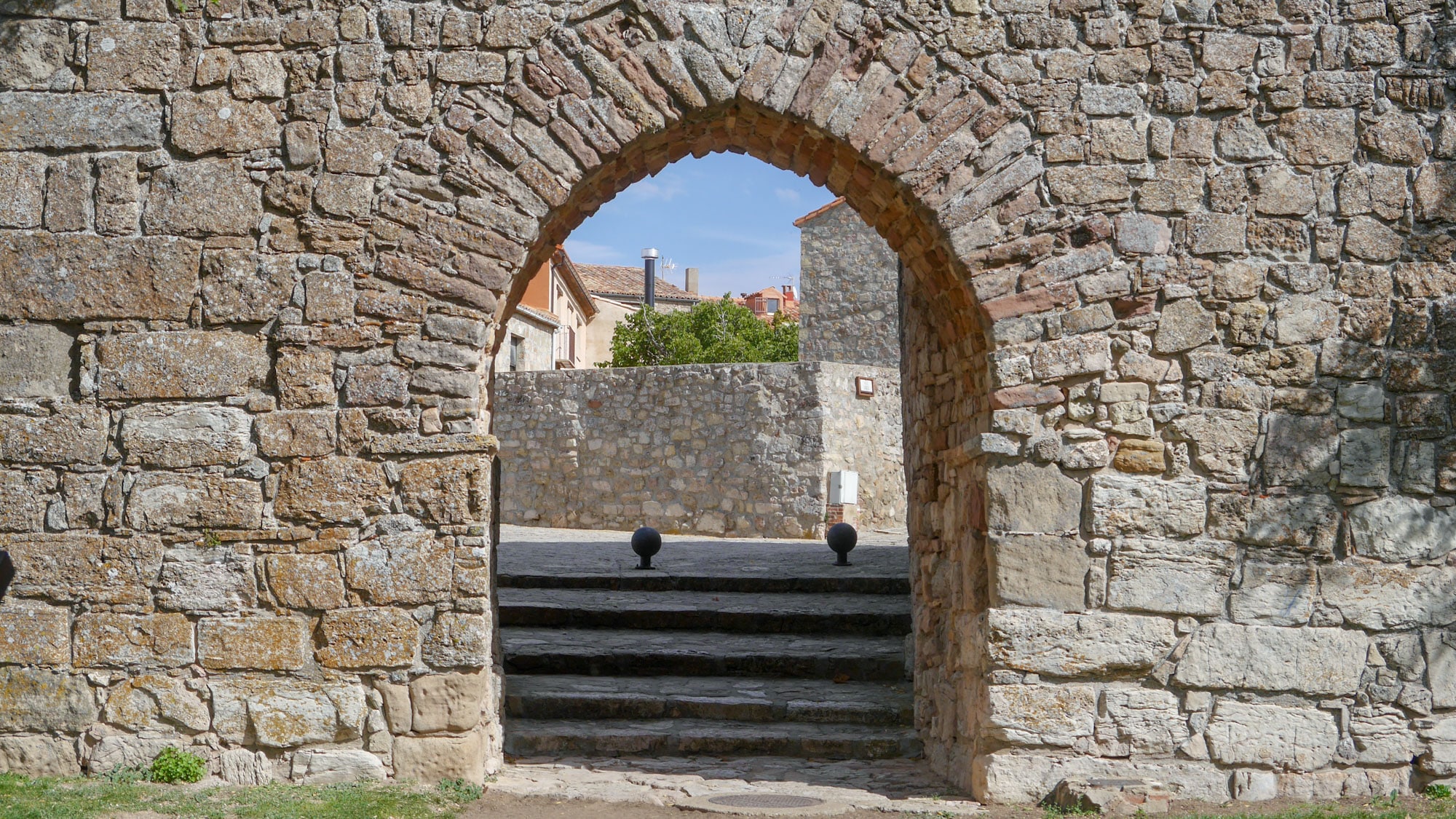
4. Medinaceli
Medinaceli, located about 150 kilometers (93 miles) northeast of Madrid, is a small town with a rich history. Situated on an imposing hill 1,200 meters (3,937 feet) above sea level, it offers stunning views of the surrounding valleys. The town’s name derives from the Latin “Occilis” or “Okilis,” and then the Moors called it “madīnat salīm.”
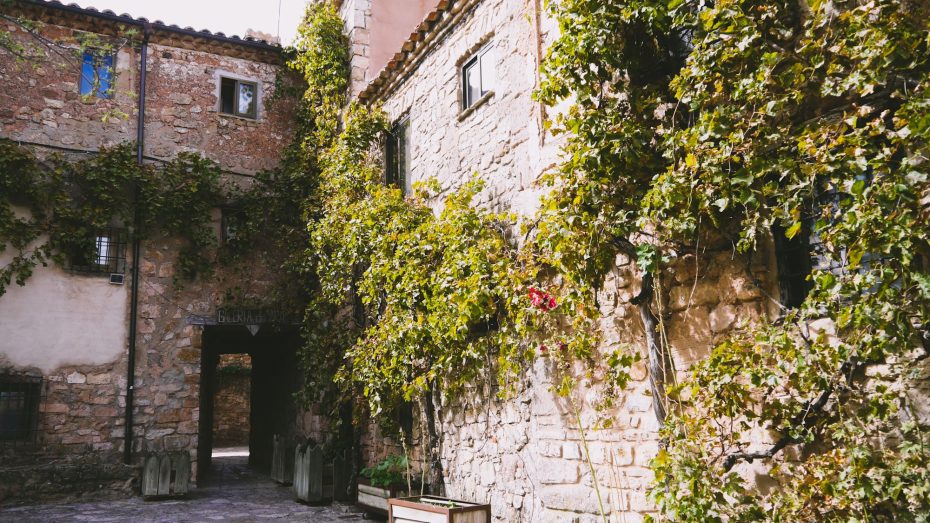
One of the main attractions in Medinaceli is the Roman Arch, the only triple-arched gate still preserved in Spain, dating back to the 1st-3rd centuries AD. Additionally, the Plaza Mayor, with its historic buildings, is another must-see. Moreover, the Ducal Palace, once the residence of the Dukes of Medinaceli, now houses Roman mosaics and offers a glimpse into the town’s noble past.
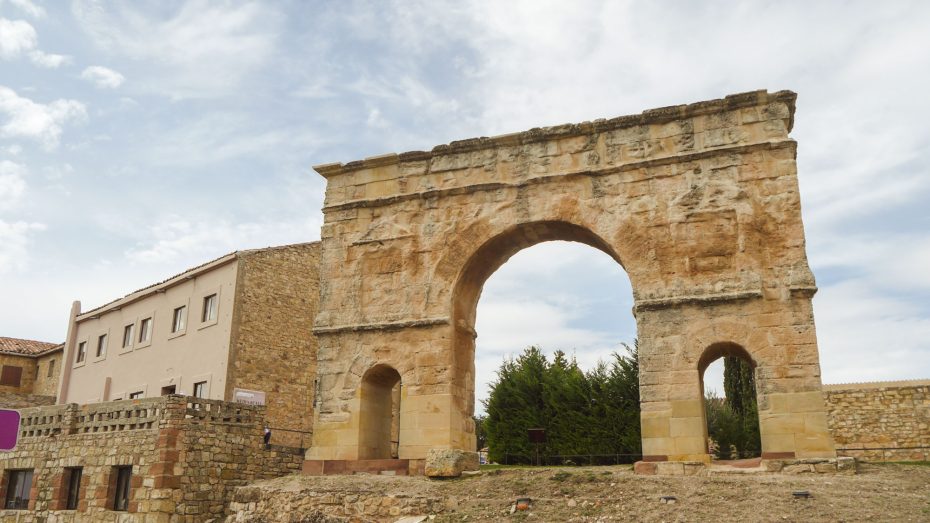
For those interested in religious architecture, the Colegiata de Nuestra Señora de la Asunción, a late-Gothic collegiate church, is worth a visit. Furthermore, the Convent of Santa Isabel, founded in 1528, and the ruins of the ancient Moorish castle add to the town’s historical charm.
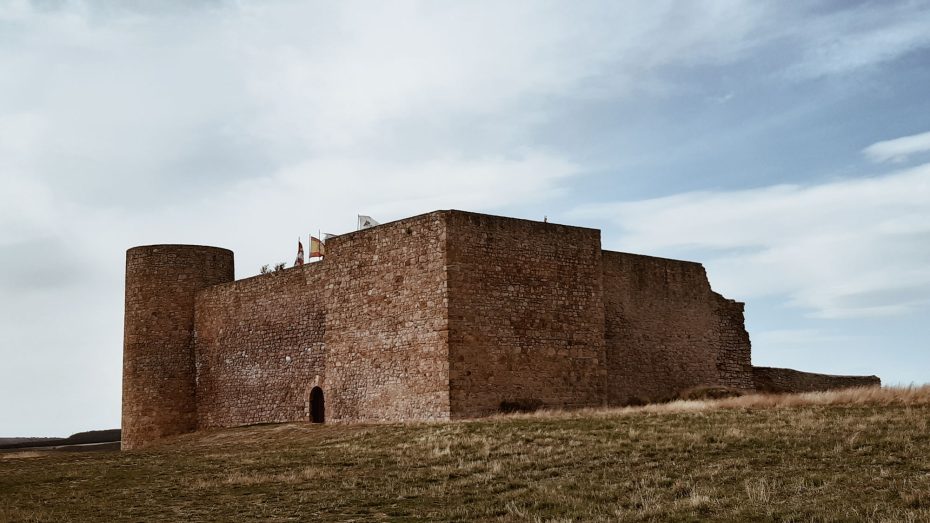
Medinaceli is easily accessible by car via the A-2 highway. If you’re traveling by train, you can catch a regional train to Medinaceli, which takes about two hours from Madrid.
By and large, Medinaceli is even more of a “secret destination” than Sigüenza, so the range of accommodations is not too wide. Overall, Casa Palaciega El Cuartel provides a luxurious stay. Meanwhile, Hotel MedinaSalim offers comfortable mid-range rooms, and Hotel Nico is a charming, budget-friendly option.
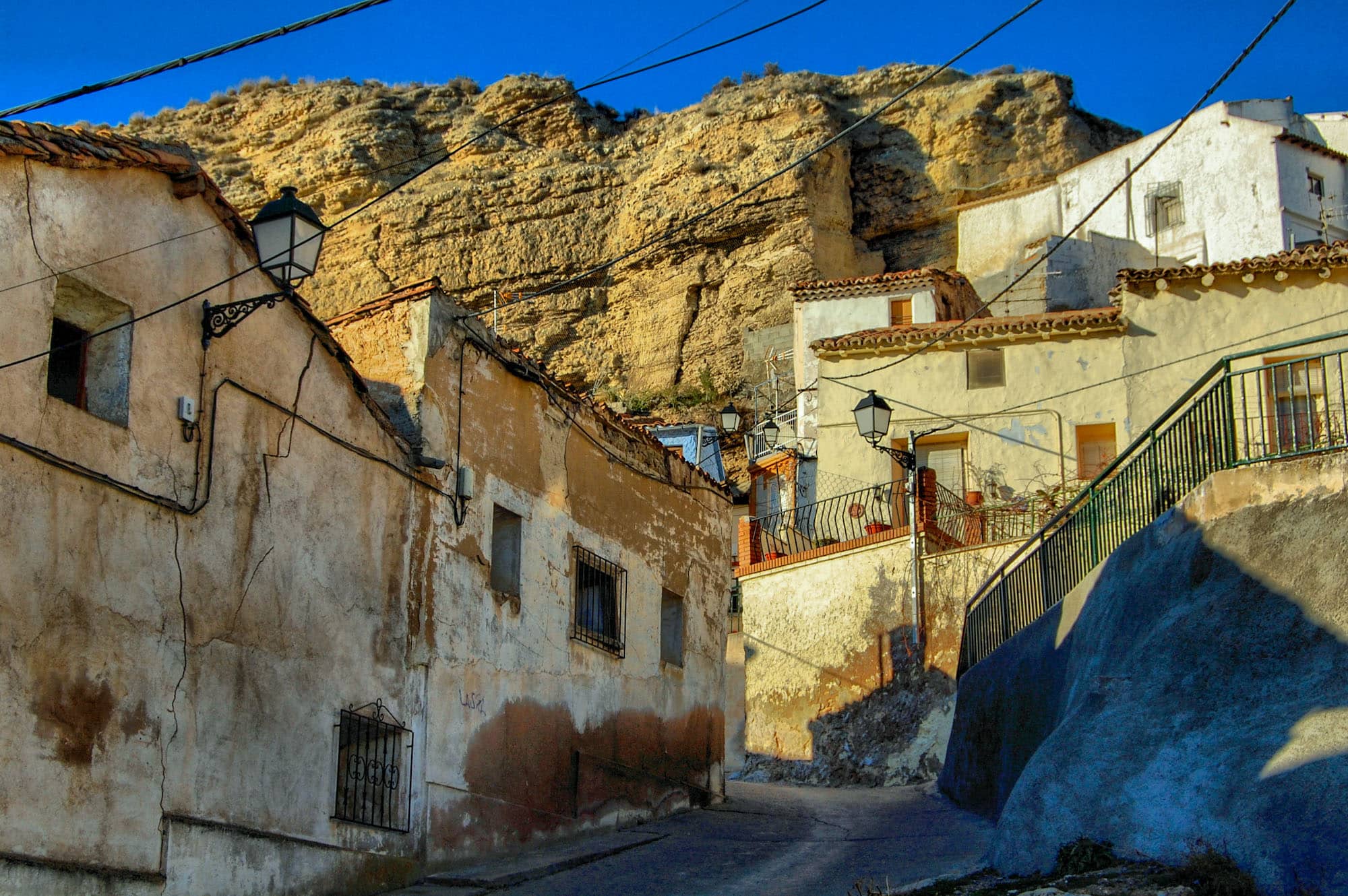
5. Calatayud
Continuing our panoramic Barcelona to Madrid route, we arrive at Calatayud, located about 230 kilometers (143 miles) northeast of Madrid. This city has a long history, having been founded by the Romans in the 2nd century BC as Augusta Bilbilis. Over the centuries, it has been influenced by various cultures, including the Visigoths, Muslims, and Christians.
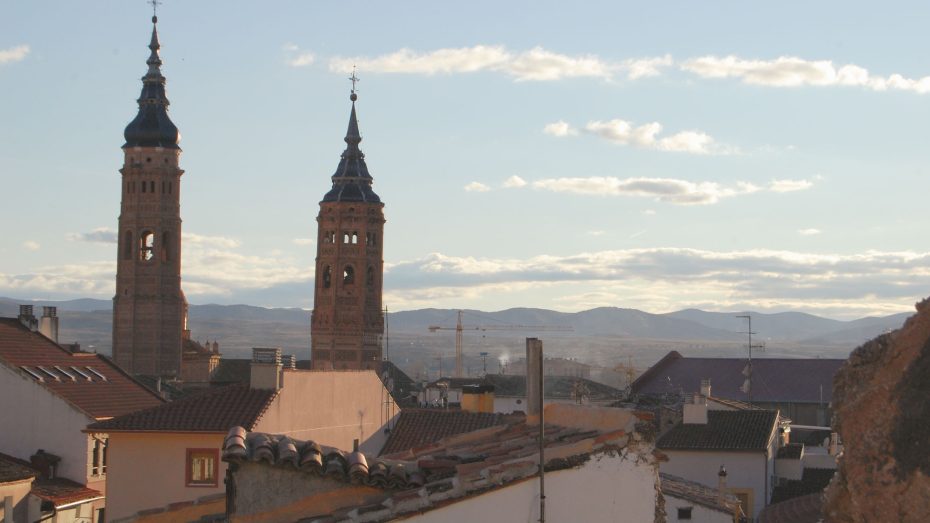
One of the main attractions in Calatayud is the Fortified Enclosure, which includes five castles and offers stunning views of the city and its surroundings. The Collegiate Church of Santa Maria, an example of Mudejar architecture, is another must-see. Additionally, the Church of San Pedro de los Francos and the Palace of the Counts of Sástago are worth a visit.
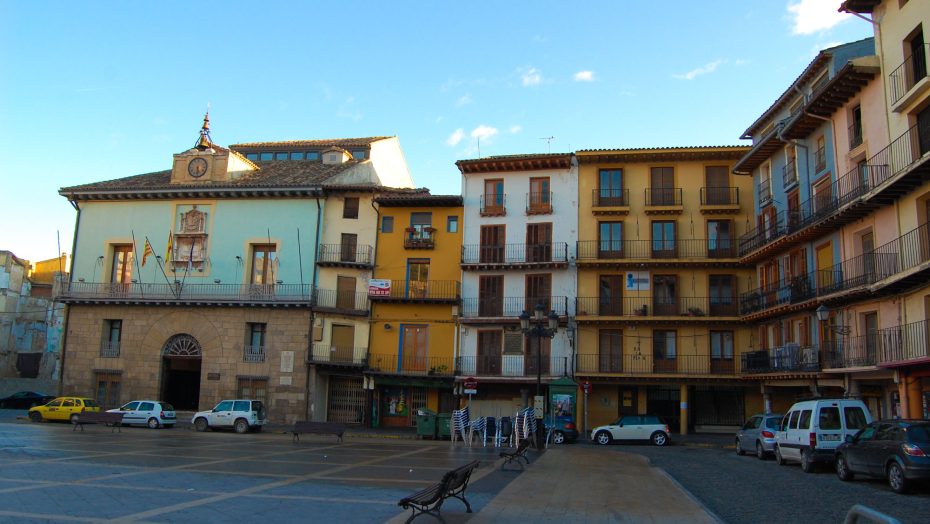
For nature lovers, nearby natural areas, such as Sierra de Vicort, offer beautiful landscapes among mountains, valleys, and waterfalls. Calatayud’s surroundings are perfect for hiking and birdwatching.
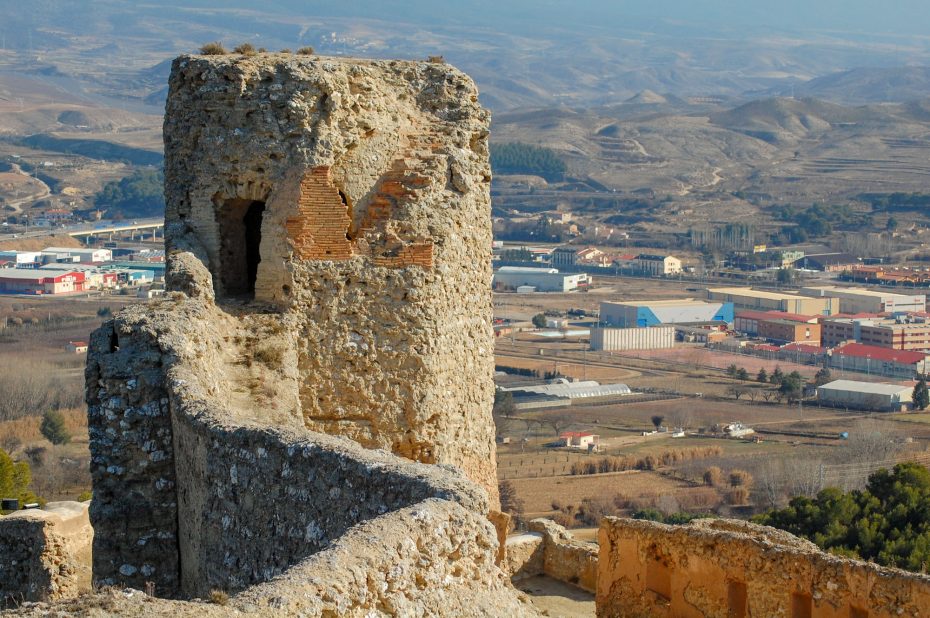
Calatayud is easily accessible by car via the A-2 highway. If you’re traveling by train, Regional services and the AVE Madrid–Barcelona high-speed rail line stop in Calatayud, making it a convenient destination.
Calatayud offers several accommodations. Hotel Monasterio Benedictino provides a luxurious stay in a historic setting. For a mid-range option, Hotel Castillo de Ayud offers comfortable rooms and modern amenities. Lastly, Hostal Mesón de la Dolores provides affordable and charming accommodations if you’re on a budget.
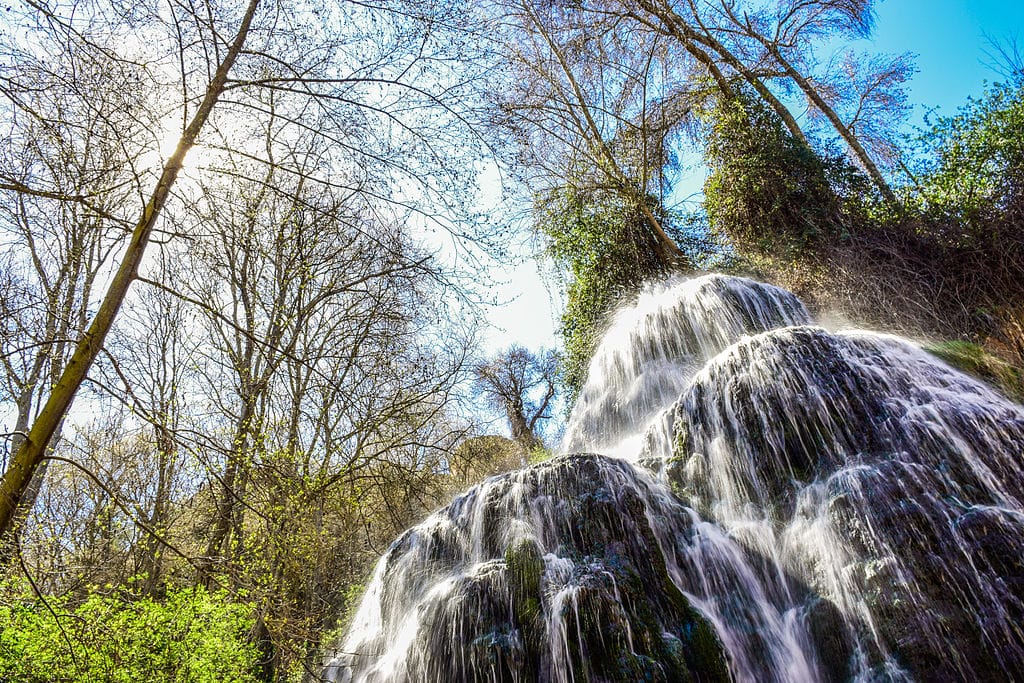
Our scenic journey from Barcelona to Madrid takes us to Monasterio de Piedra. This stunning monastery, founded in 1194 by Cistercian monks, is set in a lush natural park south of Calatayud.
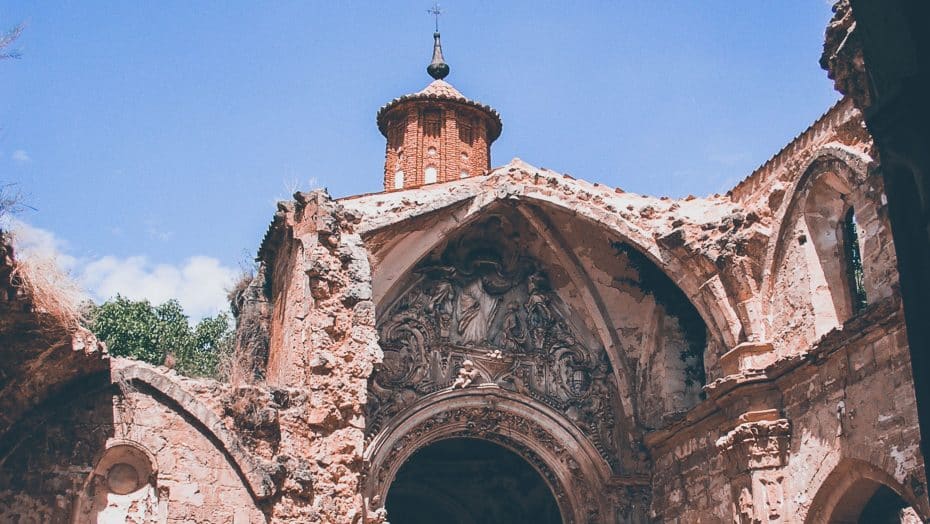
The monastery is a beautiful example of Gothic architecture, with its cloisters, chapter house, and church. The highlight, however, is the surrounding natural park, which features a series of waterfalls, caves, and lush greenery. The most famous waterfall, Cola de Caballo, cascades into a crystal-clear pool, creating a picturesque scene.
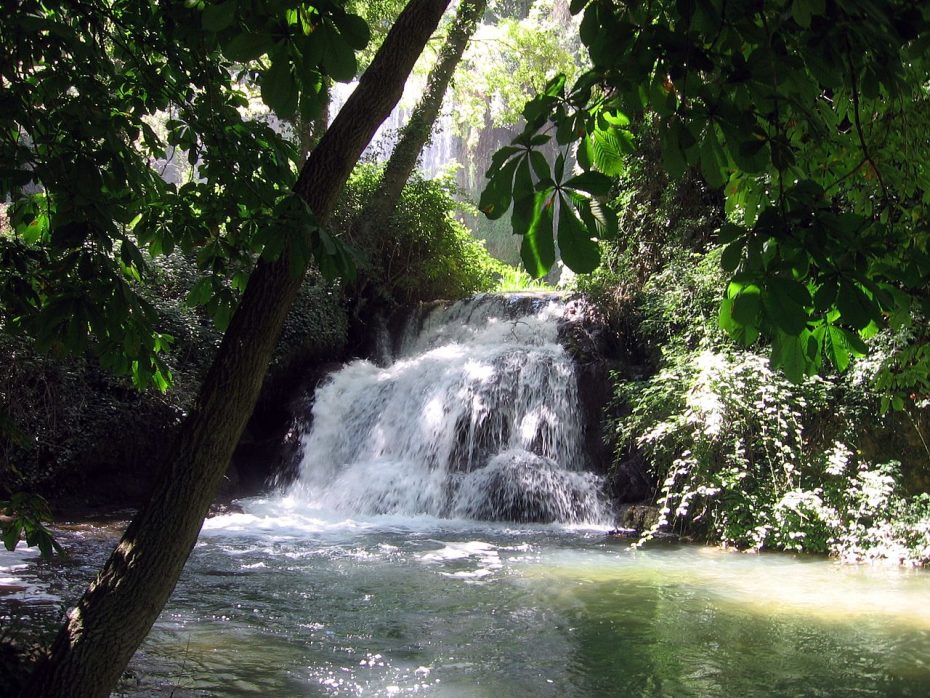
In addition to its natural beauty, the park is home to various wildlife, including birds, deer, and wild boar. The park also offers several well-marked trails, making it easy to explore the area on foot. Moreover, the park’s botanical garden showcases a diverse collection of plant species.
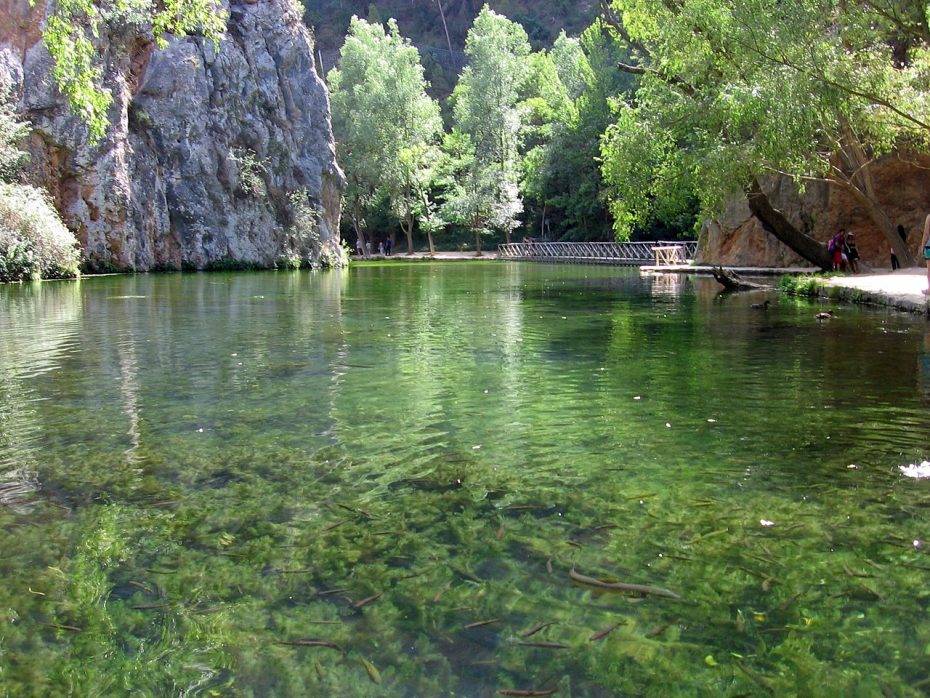
For those interested in history, the park also houses the Monastery Museum, which provides insights into the Cistercian monks’ life and the monastery’s history. The Fish Farm, established in the 19th century, is an interesting spot to learn about trout breeding.
Monasterio de Piedra is accessible by car via the A-2 highway. If you’re traveling by train, you can catch a regional train to Calatayud and then take a short drive to the monastery, as it is not directly reachable by train.
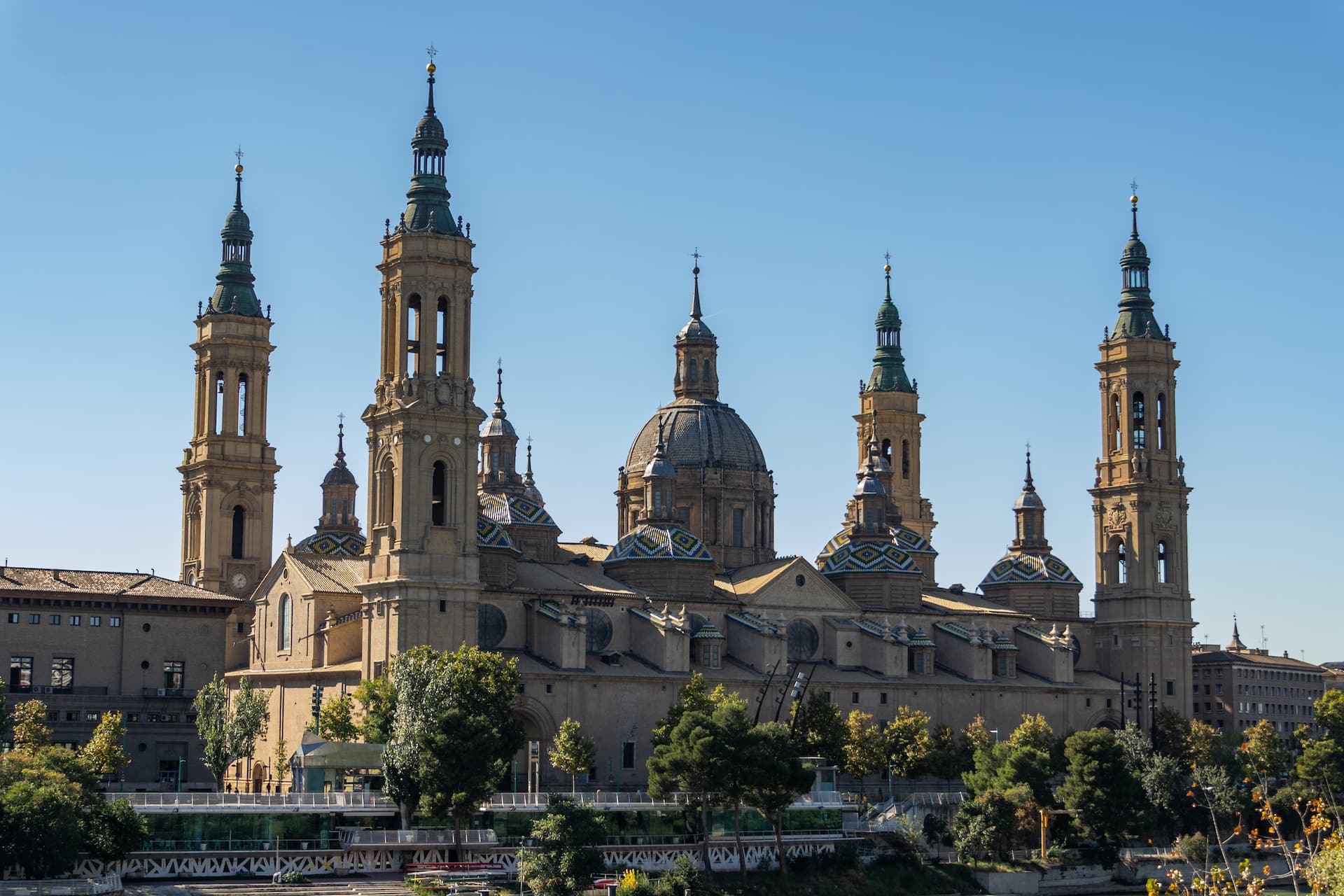
7. Zaragoza
We continue our journey through the best destinations and things to see between Barcelona and Madrid and arrive in Zaragoza. This lively city, the capital of the Aragon region, boasts a rich history that stretches back to Roman times and beyond.
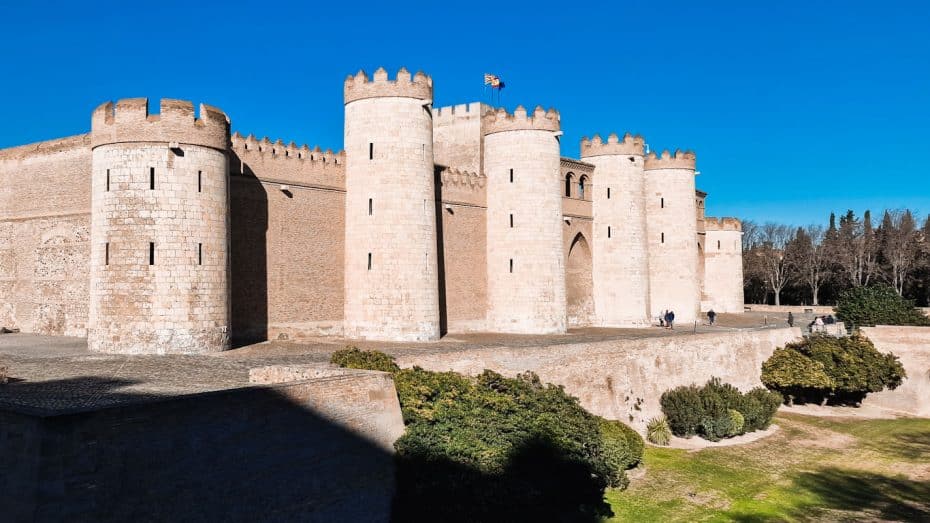
To begin with, a visit to Zaragoza wouldn’t be complete without seeing the Basilica del Pilar, a magnificent baroque church on the banks of the Ebro River. This basilica, dedicated to the Virgin Mary, is an important Roman-Catholic pilgrimage site. Additionally, the Aljafería Palace, a fortified medieval Islamic palace that now serves as the seat of the Aragonese Parliament, offers a fascinating glimpse into Spain’s Moorish heritage.
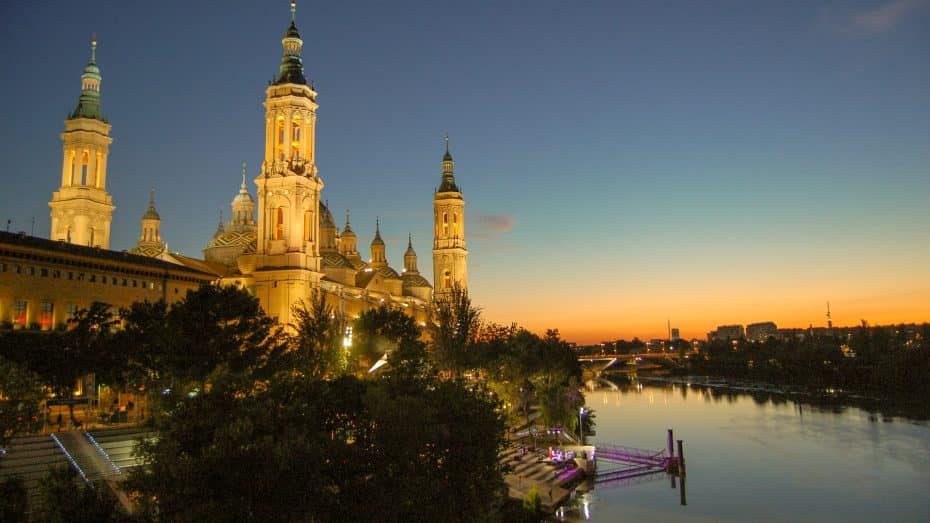
Art lovers will find the Goya Museum particularly interesting. It houses an extensive collection of works by Francisco de Goya, one of Spain’s most renowned painters. The museum is housed in the Casa de los Morlanes, a stunning Renaissance building.
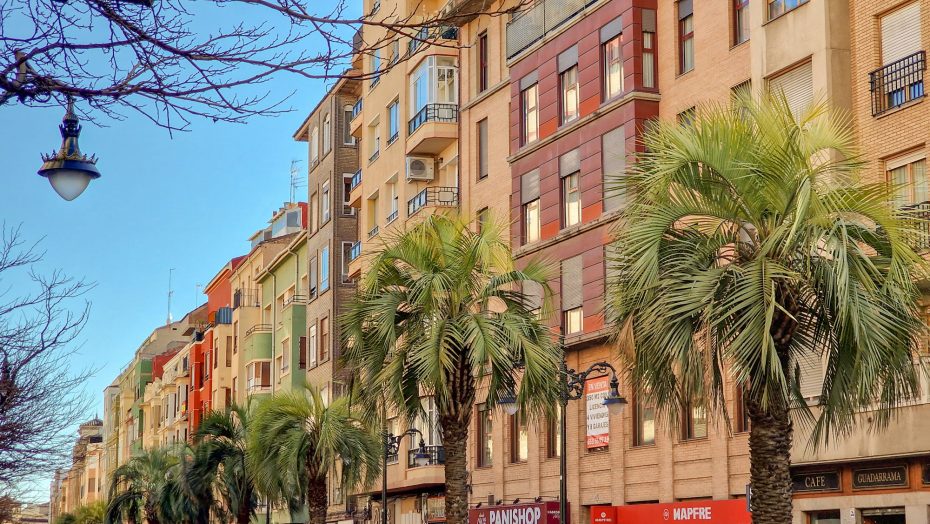
Furthermore, Zaragoza is famous for its vibrant tapas scene. The El Tubo district, with its labyrinth of narrow streets, is packed with bars and restaurants where you can indulge in a variety of delicious tapas.
Traveling to Zaragoza is straightforward. If you are traveling by car, you can take the A-2 highway. If you prefer the train, the AVE Madrid–Barcelona high-speed rail line stops in Zaragoza-Delicias.
When it comes to accommodations in Zaragoza, the Aragón capital has plenty to offer. The INNSiDE by Meliá Zaragoza provides a luxurious stay right in the city center. For a mid-range option, Hotel Inca offers comfortable rooms and a welcoming atmosphere. Budget travelers can opt for Hotel Sauce, which provides affordable and clean accommodations.
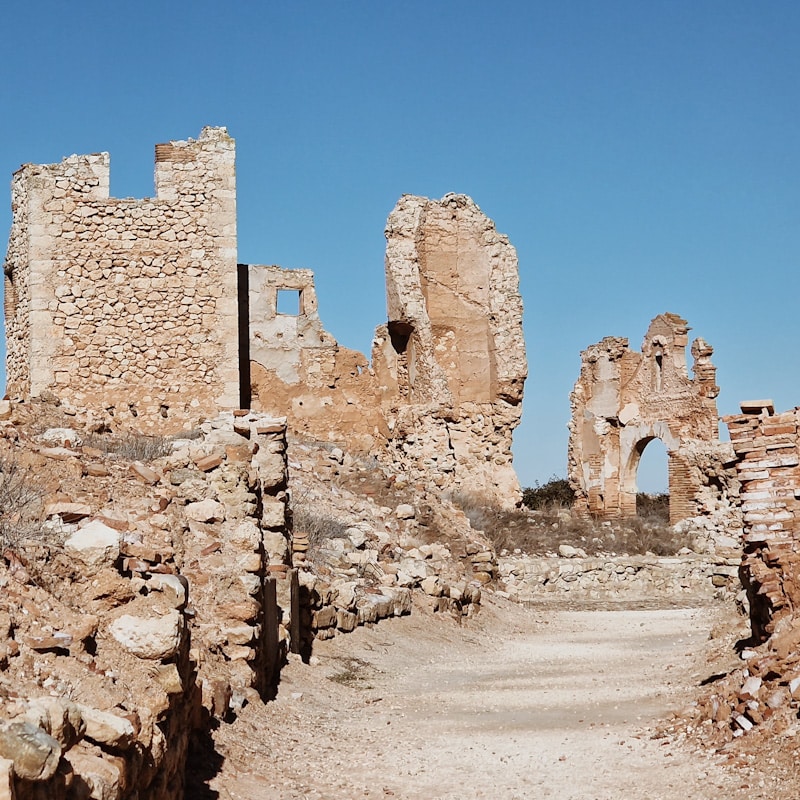
8. Belchite
Basing ourselves in Zaragoza, we can take a day trip to Belchite, located about 50 kilometers (31 miles) south of Zaragoza. This small town is known for its haunting ruins, which are a stark reminder of the Spanish Civil War.
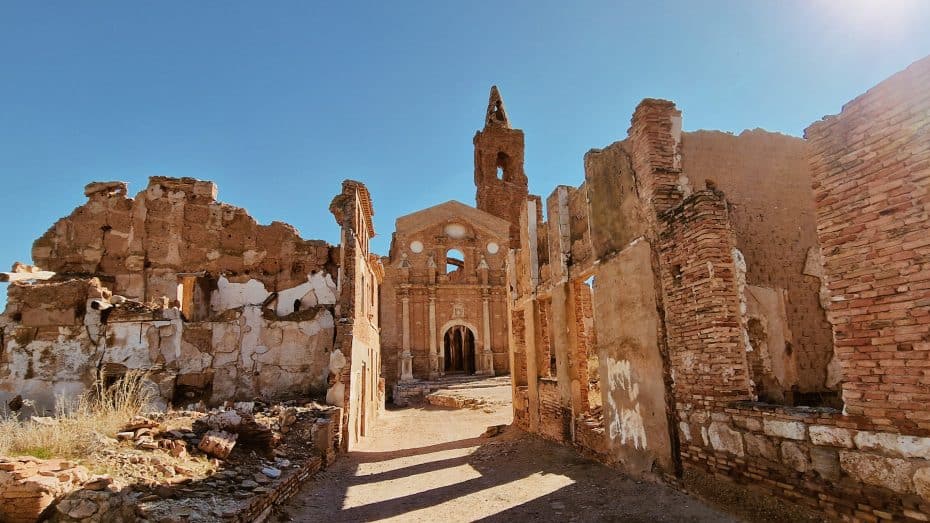
Belchite was the site of a major battle during the Spanish Civil War in 1937, and the town was left in ruins. Today, the old village of Belchite remains as it was after the battle, with crumbling buildings and empty streets. Walking through the ruins, you can feel the weight of history and the impact of the war on this once-thriving town.
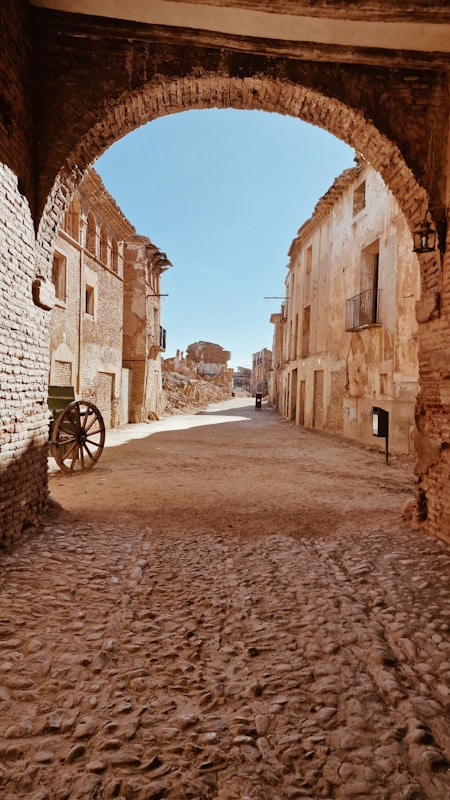
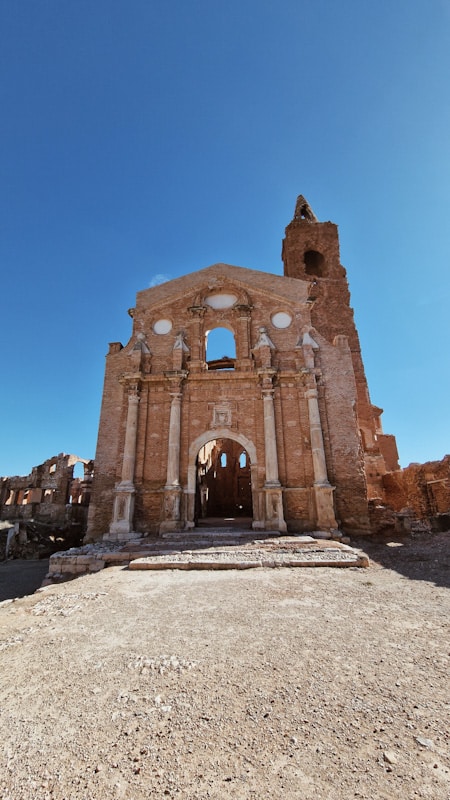
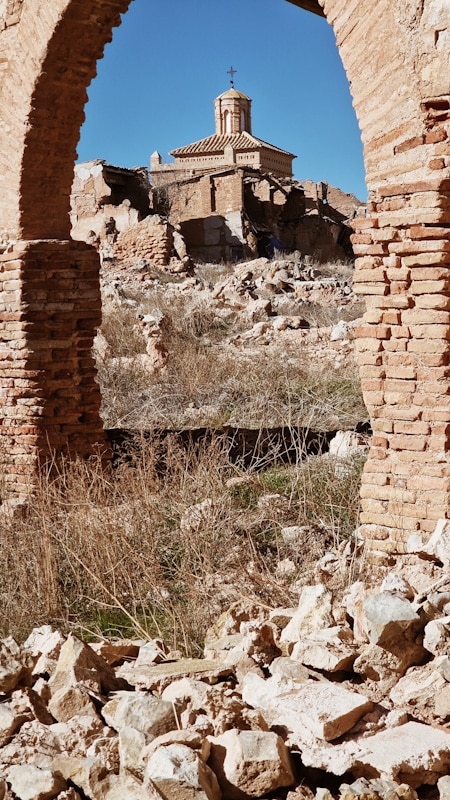
In addition to the ruins, you can visit the new town of Belchite, which was built nearby after the war. The new town offers a glimpse into the resilience of the people who rebuilt their lives after such devastation.
Belchite is accessible by car from Zaragoza. The drive along the A-222 highway takes about 45 minutes. If you prefer public transportation, buses also run between Zaragoza and Belchite.
For those interested in Spanish history, a guided tour of Belchite Old Town is highly recommended. The tours provide valuable insights into the events of the Spanish Civil War and the significance of Belchite in the conflict.
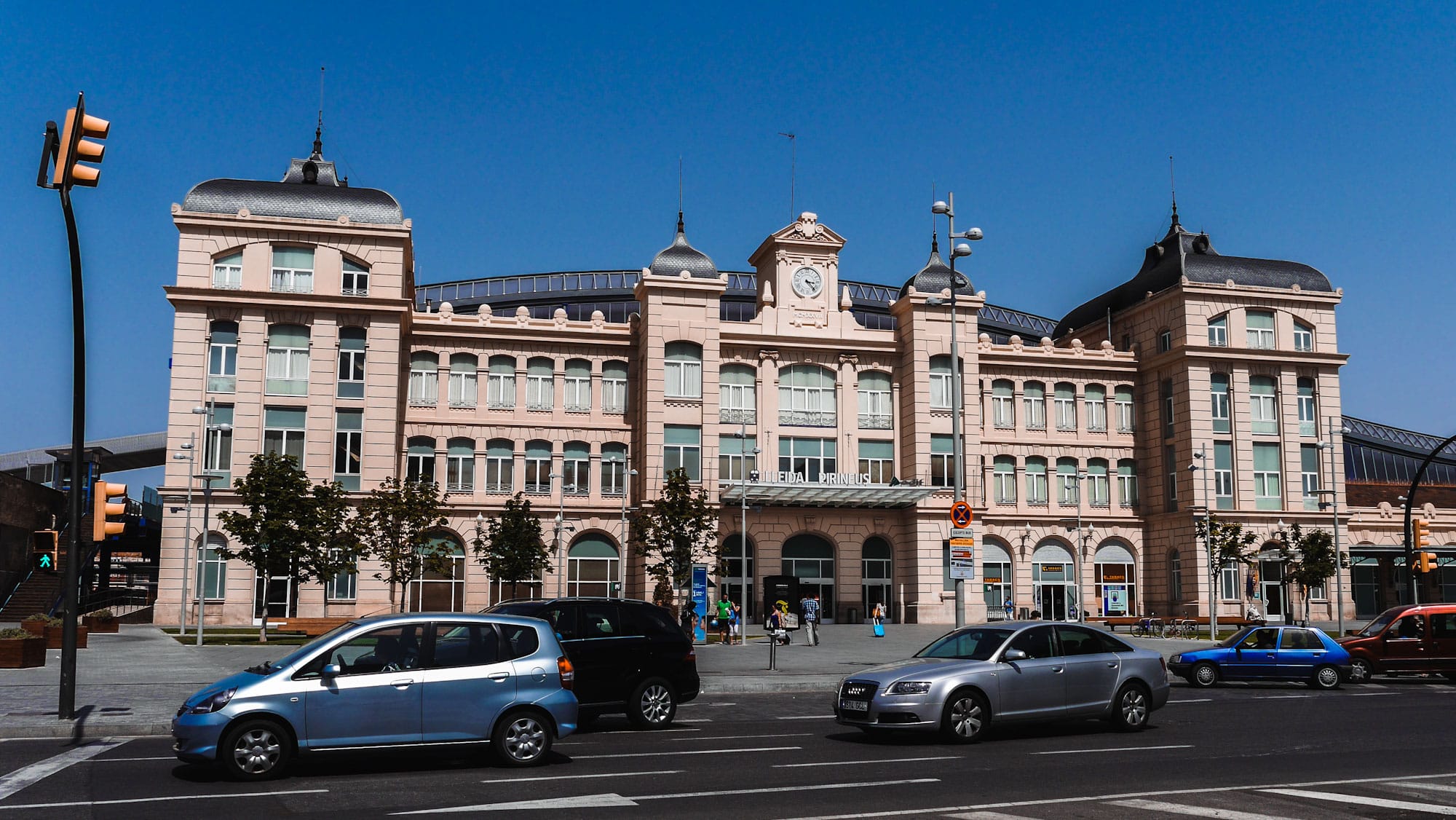
9. Lleida
Lleida is next on our list of places worth visiting between Madrid and Barcelona, located about 160 kilometers (99 miles) west of Barcelona. This historic city, one of the oldest in Catalonia, offers many cultural attractions.
One of the unmissable things to see in Lleida is the Seu Vella, an impressive cathedral perched on a hill overlooking the city. Built in the 13th century, this Gothic masterpiece offers stunning views of the surrounding area. Additionally, the nearby Castle of Gardeny, a Templar fortress, provides a fascinating glimpse into Catalonia’s medieval past.
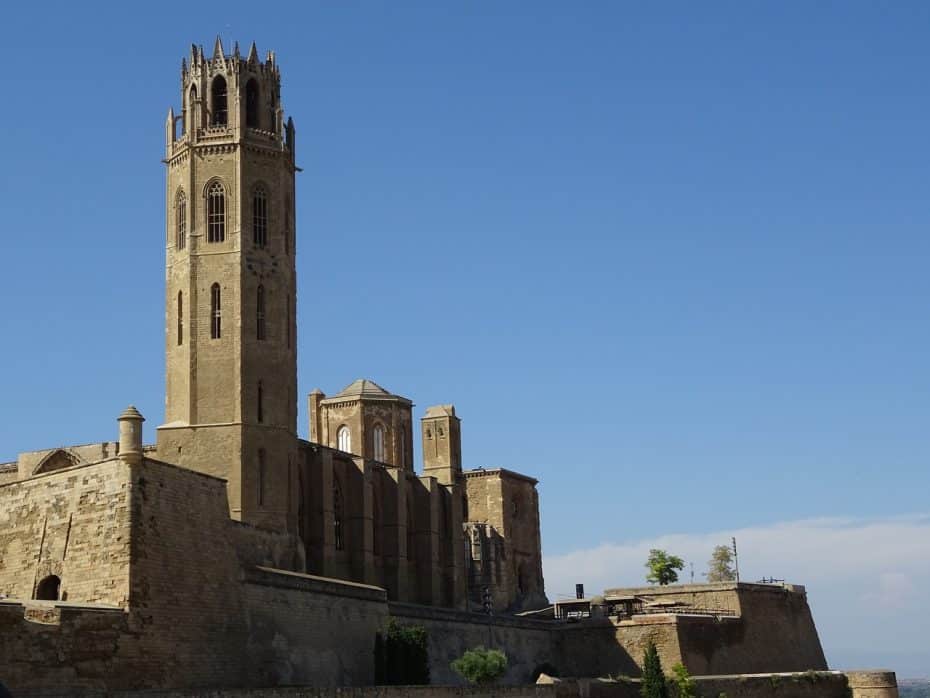
For art enthusiasts, the Museu de Lleida houses an extensive collection of artifacts and artworks spanning from prehistoric times to the modern era. The museum is in a beautifully restored building that combines contemporary and historical architecture.
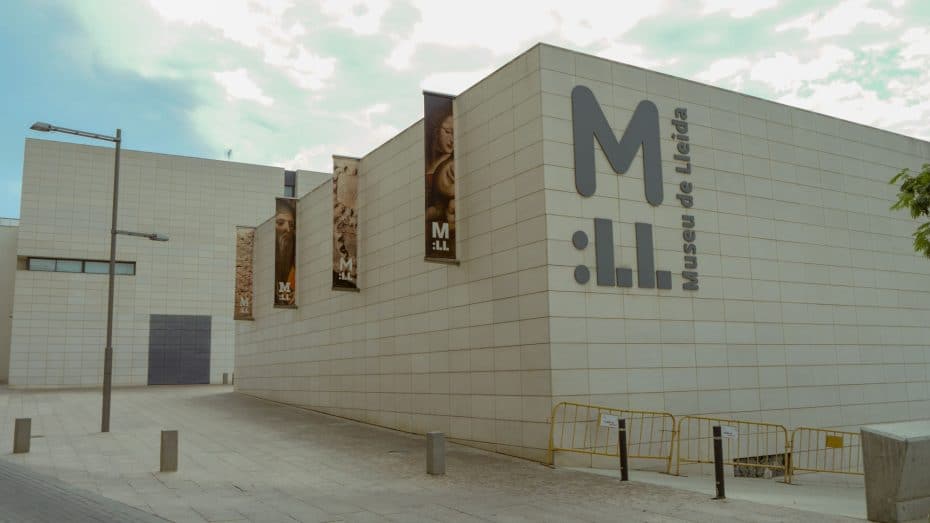
Traveling to Lleida is straightforward. You can take the A-2 highway if traveling by car. If you prefer the train, the AVE Madrid–Barcelona high-speed rail line stops in Lleida.
Lleida offers a wide range of accommodations. The Parador de Lleida provides a luxurious stay in a historic setting. Additionally, Hotel Zenit Lleida offers comfortable rooms. Budget travelers can opt for the ibis Lleida, which provides affordable accommodations.
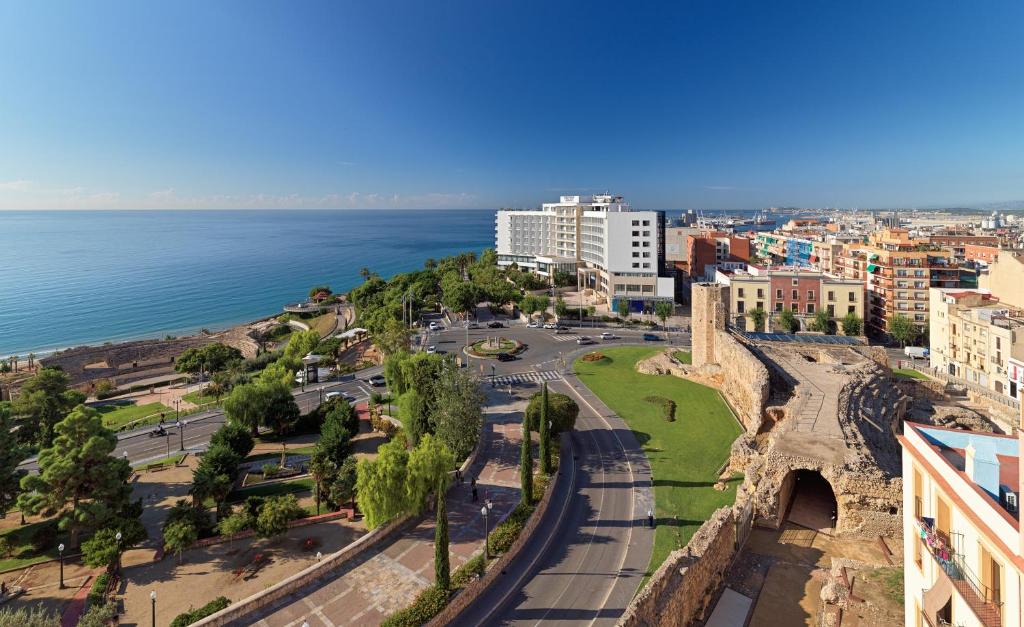
10. Tarragona
Continuing our journey, we arrive at Tarragona, about 100 kilometers (62 miles) southwest of Barcelona. This coastal city is renowned for its Roman history and beautiful Mediterranean beaches.
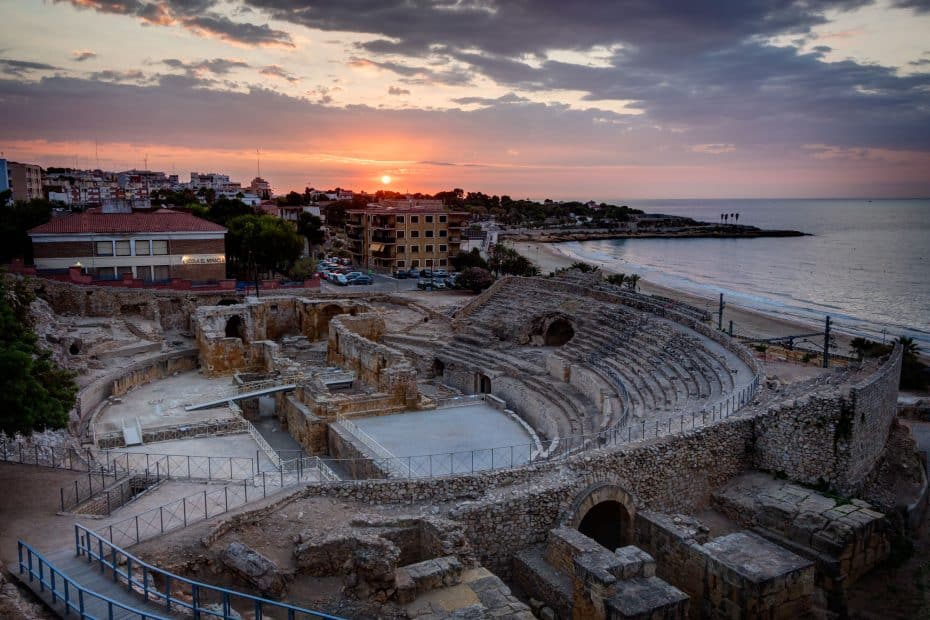
Start your visit at the Roman Amphitheatre, a well-preserved structure from the 2nd century AD. Overlooking the sea, it once hosted gladiatorial contests and other public spectacles. The Tarragona Cathedral, a blend of Gothic and Romanesque architecture, is another must-see. Its cloister and museum offer insights into the city’s religious history.
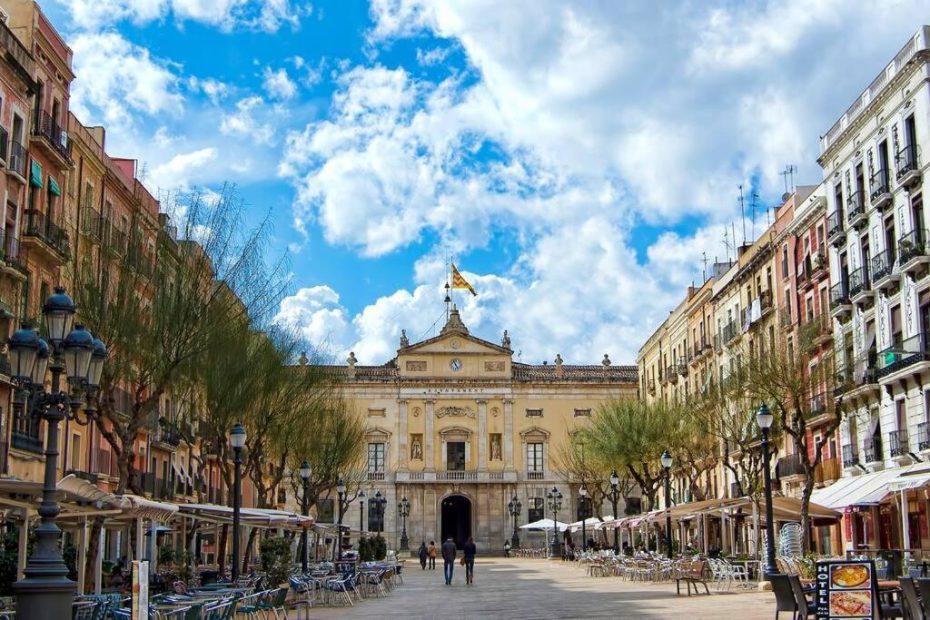
For history enthusiasts, the National Archaeological Museum of Tarragona houses a vast collection of Roman artifacts, including mosaics, sculptures, and everyday items from ancient Tarraco. The museum is located in the heart of the old town, making it easy to explore other nearby attractions.
Tarragona is also home to the Balcón del Mediterráneo, a scenic viewpoint offering panoramic Mediterranean Sea views. It’s a great spot to relax and take in the beauty of the coastline.
You can drive to Tarragona along the AP-7 highway. If you prefer the train, the AVE Madrid–Barcelona high-speed rail line stops in Tarragona, making it easily accessible.
For accommodations, Tarragona offers a range of options. The H10 Imperial Tarraco provides luxury near the city center. Additionally, Hotel Lauria offers comfortable rooms and a convenient location. Budget travelers should check out Hostal Noria, which provides affordable and clean accommodations.
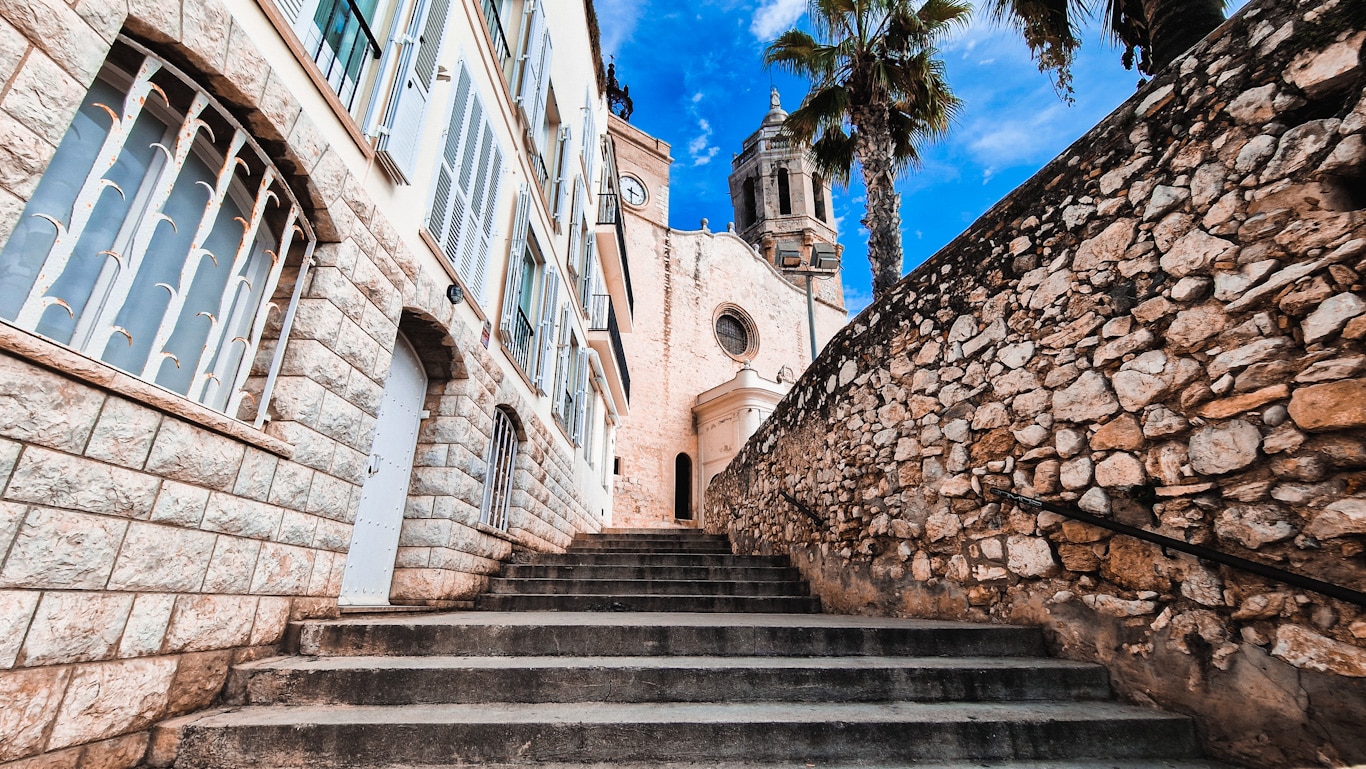
11. Sitges
Our final destination on this journey of the best stopping points between Barcelona and Madrid is Sitges, a charming coastal town located about 35 kilometers (22 miles) southwest of Barcelona. Known for its beautiful beaches and vibrant nightlife, and as an LGBTQ+ friendly destination, Sitges is a perfect place to unwind and soak in the Mediterranean atmosphere.
One of the main attractions in Sitges is its stunning coastline, featuring 17 sandy beaches. The most popular ones include Platja de la Ribera, Platja de Sant Sebastià, and Platja de Balmins. Each beach has its own unique charm, offering a mix of lively atmospheres and tranquil spots.
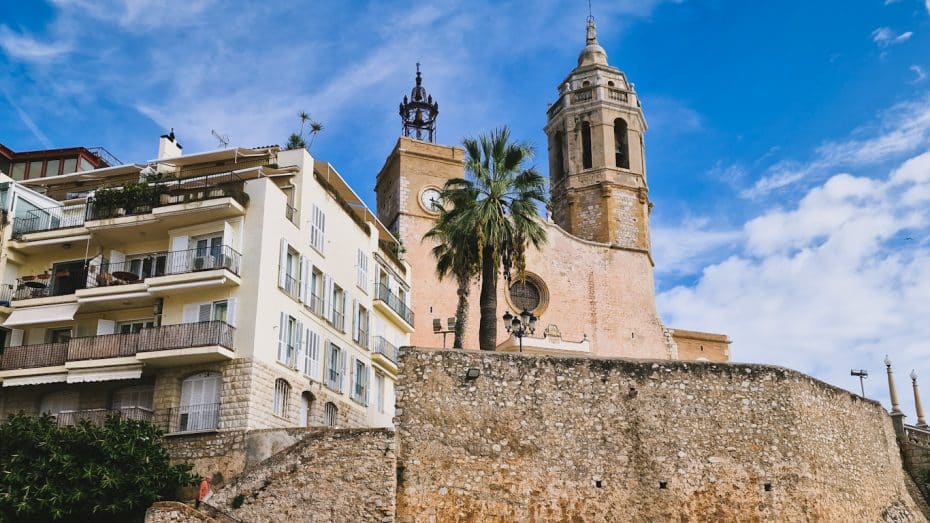
Sitges is also famous for its historic old town, with narrow streets lined with whitewashed buildings, boutique shops, and cozy cafes. The Church of Sant Bartomeu and Santa Tecla, perched on a hill overlooking the sea, is a must-visit landmark. Its baroque architecture and stunning views make it a perfect spot for photos.
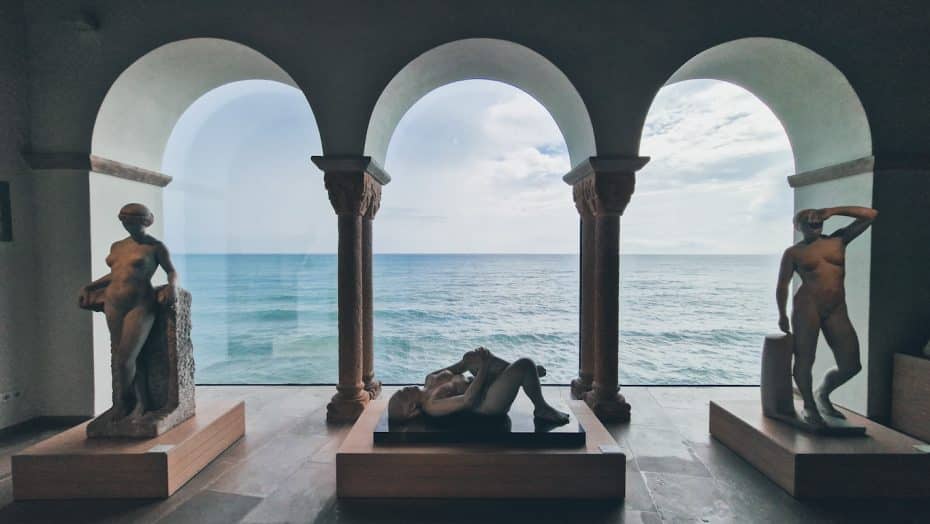
For art lovers, the Cau Ferrat Museum and the Maricel Museum house impressive collections of Art Nouveau and contemporary art in beautifully restored buildings.
Sitges is accessible by car via the C-32 highway. If you travel by train, there are regular services from Barcelona that take about 40 minutes.
Accommodation in Sitges is not a problem. For an upscale trip, Meliá Sitges provides a luxurious stay with modern amenities and a pool. Meanwhile, Hotel Sitges offers comfortable rooms and a convenient location. Lastly, Hotel El Xalet provides affordable accommodation.
In conclusion, our journey between Madrid and Barcelona has revealed some incredible destinations worth exploring. From historic towns to stunning natural parks, there’s so much to see and do along the way. What do you think? Are there any other places you believe should be included in this itinerary? Share your thoughts and experiences in the comments!


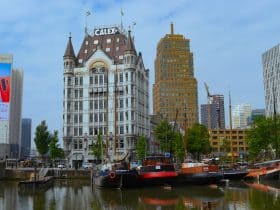

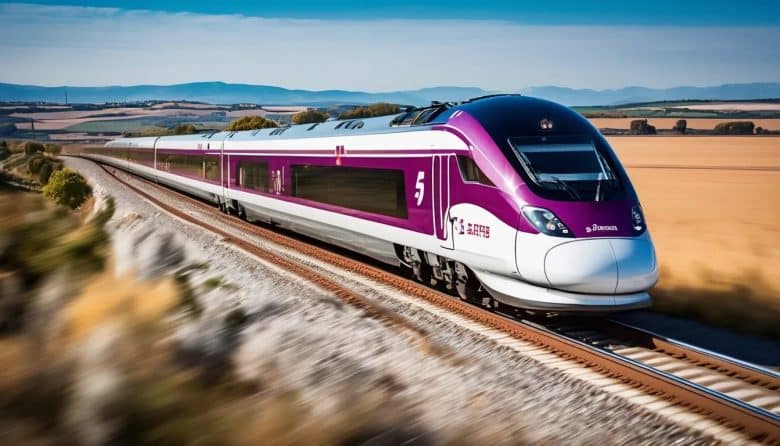
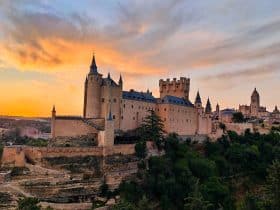
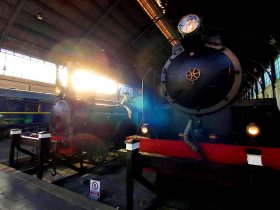
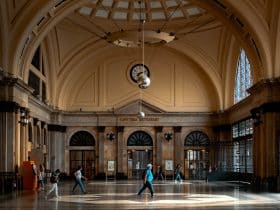
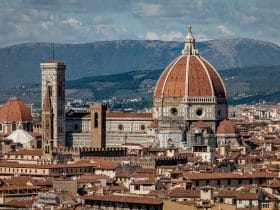
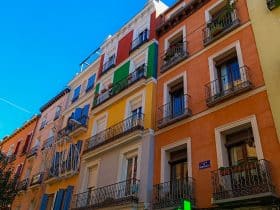
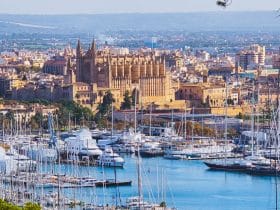
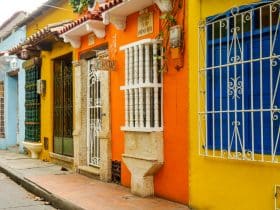





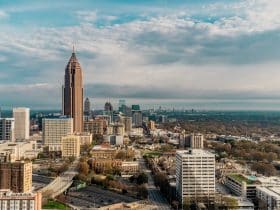








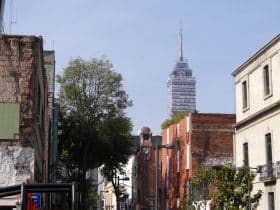
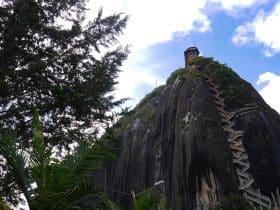
Leave a Reply
View Comments